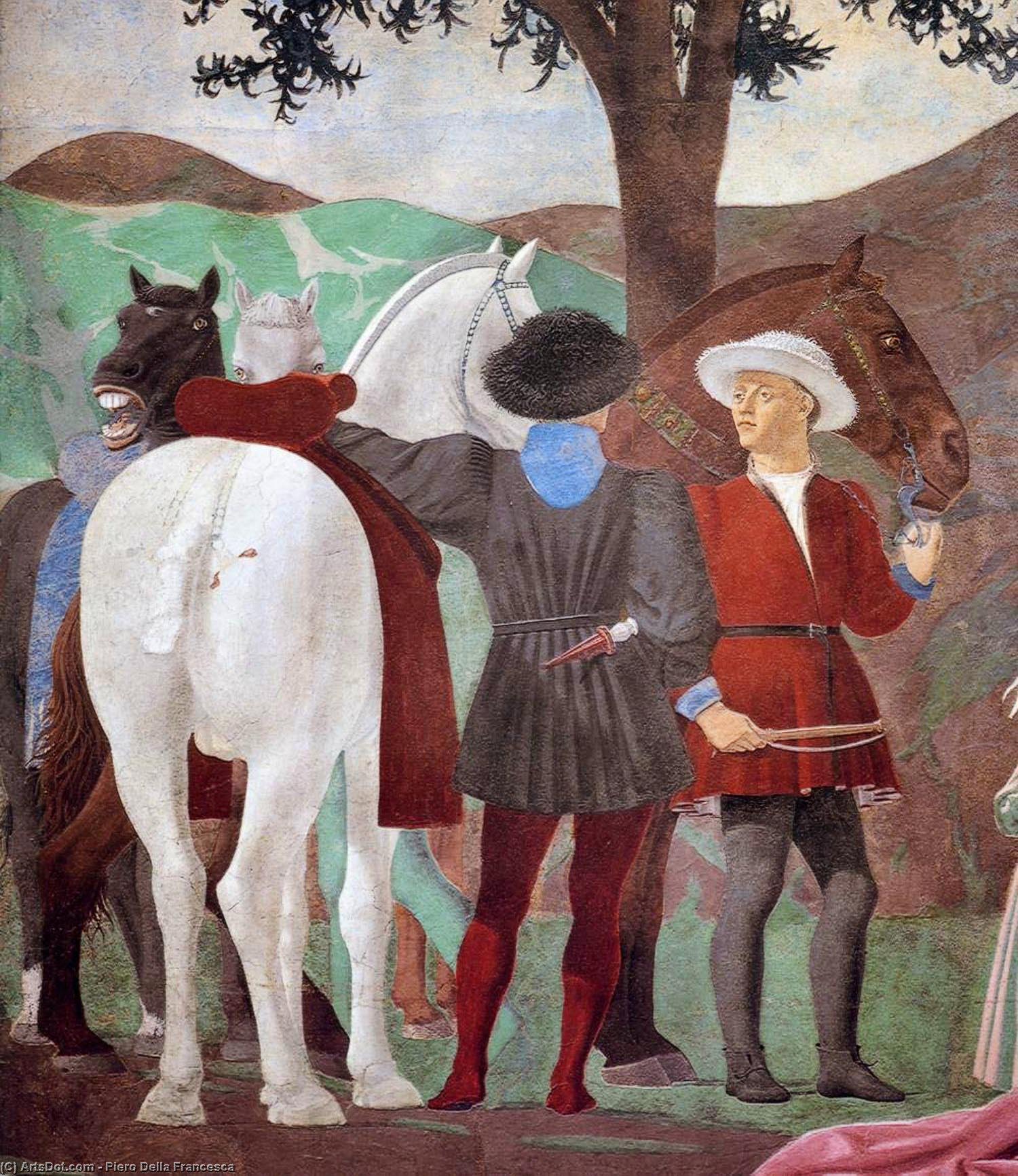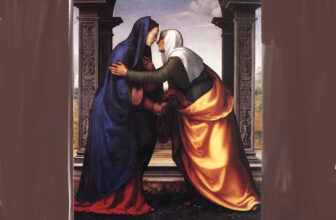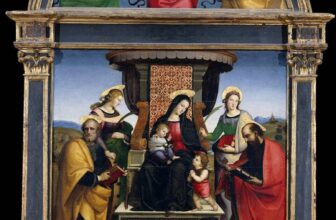
What Was Piero della Francesca Known For
In the quiet hills of Tuscany, nestled within the medieval charm of the town of Sansepolcro, a painter emerged in the early 15th century whose work would shape the very foundation of Renaissance art. His name was Piero della Francesca, and though his fame was overshadowed by later titans like Michelangelo and Leonardo da Vinci, his influence runs like a golden thread through the history of Western painting.
Piero della Francesca was more than just a painter, he was a mathematician, a theorist, a geometer of beauty. His paintings are serenely still, yet saturated with meaning; composed like symphonies, yet silent like stone statues. He didn’t paint to overwhelm the viewer with drama; he painted to awaken their sense of divine order, of timeless truth.
This is the story of a man who painted with the mind of a mathematician and the soul of a poet.
The Early Life of Piero della Francesca
Born around 1412 in Sansepolcro, a small town in central Italy, Piero was the son of a prosperous tradesman and a noblewoman named Romana di Perino da Monterchi. His full name was Piero di Benedetto de’ Franceschi, but he became known as Piero della Francesca, honoring his mother, a rare naming convention in a patriarchal era.
Little is known about his early training, but by the 1430s, he was active in Florence, the epicenter of the Renaissance, working alongside artists such as Domenico Veneziano. The Florentine influence, particularly that of Masaccio, would profoundly shape his development.
But unlike his more flamboyant contemporaries, Piero was a quiet revolutionary. Where others painted with passion, Piero painted with principle. He was obsessed with geometry, light, and proportion, and these obsessions defined his artistic vision.
Piero della Francesca is celebrated for several defining qualities that set him apart:
Use of Perspective: Piero was one of the earliest and most masterful users of linear perspective, employing mathematical precision to create depth and harmony.
Mathematical Composition: He applied geometry and ratios to structure his compositions, creating a serene, almost divine visual balance.
Quiet Monumentality: His figures are calm, statuesque, and deeply contemplative, imbued with a solemn dignity.
Luminous Light: He developed a technique of diffused, even lighting that softened forms and gave his paintings a timeless, dreamlike quality.
Integration of Science and Art: He was also a prolific writer on mathematics, authoring treatises like De Prospectiva Pingendi, where he explored the science of visual perspective.
Most Famous Paintings by Piero della Francesca
Though Piero’s surviving body of work is relatively small, his masterpieces are pillars of Renaissance art. Here are his most iconic paintings:
1. The Flagellation of Christ (c. 1455–1460)
Housed at the Galleria Nazionale delle Marche in Urbino, this enigmatic painting is one of the most studied and mysterious works in art history. The composition is starkly divided: Christ is being scourged in a classical architectural space on the left, while three modern-dressed men stand aloof on the right. The painting has puzzled scholars for centuries, what is the link between the scenes?
Piero’s mastery of perspective and spatial depth is unparalleled here. Every pillar, every shadow falls into place with mathematical precision. It’s not just a depiction of a biblical event, it’s a metaphysical meditation on suffering and indifference.
2. The Baptism of Christ (c. 1448–1450)
Located in the National Gallery, London, this painting is a triumph of spiritual and geometric harmony. Christ stands in the river Jordan as John the Baptist pours water over his head. Behind him, angels observe with gentle grace.
The trees, hills, and buildings form a perfect backdrop of serene order, and the light seems to emanate from within the painting itself. The symmetry and gentle colors convey a transcendent stillness that mirrors the sanctity of the moment.
3. Resurrection (c. 1463–1465)
One of the most celebrated frescoes in the world, The Resurrection is found in the Civic Museum of Sansepolcro, Piero’s hometown. Christ rises from the tomb, holding a banner, with four sleeping guards slumped at his feet.
Christ’s figure is imposing and otherworldly, his gaze directly confronting the viewer. Giorgio Vasari called this work the “greatest painting in the world.” The composition blends naturalism with a powerful symbolism that transcends the mere telling of a biblical story.
4. Madonna del Parto (c. 1455–1465)
This fresco, located in Monterchi, features a rare image of the Virgin Mary visibly pregnant, flanked by two angels who draw back a canopy. The depiction of pregnancy in such a dignified and calm manner was revolutionary.
Piero’s reverence for women, perhaps influenced by his own mother, shines through in this work. The Madonna is not just a vessel for Christ, she is a regal, autonomous figure, poised and powerful.
5. The Legend of the True Cross (c. 1452–1466)
This massive fresco cycle, located in the Basilica of San Francesco in Arezzo, is Piero’s magnum opus. It narrates the entire mythic history of the cross, from Adam’s death to Emperor Constantine’s vision and Helena’s discovery of the cross in Jerusalem.
Spanning 10 major scenes across the walls of the church, this cycle is a masterclass in narrative art, perspective, and emotional restraint. It encapsulates Piero’s artistic philosophy: truth through beauty, clarity through order.
How Many Paintings Did Piero della Francesca Create?
Only about 20 authenticated paintings and fresco cycles by Piero della Francesca survive today. Many works have been lost, destroyed, or misattributed over the centuries.
His existing oeuvre may be small, but each work is monumental in its impact. Because he worked slowly, with exacting standards, Piero left behind a legacy of quality over quantity, a deliberate counterpoint to the prolific output of other Renaissance masters.
What Is the Most Expensive Piero della Francesca Painting?
Piero’s paintings are considered national treasures, and most are housed in public institutions. As a result, his works have rarely, if ever, been sold on the open market in modern times.
However, the estimated value of “The Flagellation of Christ” or “The Baptism of Christ” would be astronomical were they to be auctioned, likely in the hundreds of millions of dollars. Some experts have speculated that The Baptism of Christ could rival the value of da Vinci’s Salvator Mundi, given its significance and rarity.
Because his works are held by museums and Italian cultural heritage laws prevent their sale, there is no definitive “most expensive” Piero della Francesca painting, but their value is considered priceless.
Where Can You See Piero della Francesca’s Paintings Today?
Though spread across Europe, many of Piero’s masterpieces are still in Italy, preserved in their original locations or in museums close to where he lived and worked. Here’s where you can find them:
Italy
Sansepolcro (Civic Museum) – Resurrection
Arezzo (Basilica of San Francesco) – Legend of the True Cross
Monterchi (Museo della Madonna del Parto) – Madonna del Parto
Urbino (Galleria Nazionale delle Marche) – Flagellation of Christ, Portraits of Federico da Montefeltro and Battista Sforza
Perugia (Galleria Nazionale dell’Umbria) – Polyptych of St. Anthony
United Kingdom
London (National Gallery) – The Baptism of Christ, Nativity (damaged but still notable)
France
Louvre, Paris – Some drawings and works attributed to his school
United States
Some of Piero’s drawings and workshop pieces may occasionally appear in major museum collections, but the core of his masterpieces remains in Europe.
What Is Piero della Francesca’s Legacy?
Piero’s legacy lies not just in his paintings, but in the fusion of science and spirituality that defined his approach.
1. Influence on Later Artists
Piero della Francesca profoundly influenced later masters, including:
Leonardo da Vinci, who studied his treatises on perspective.
Albrecht Dürer, who was deeply interested in his geometric theories.
Giorgio de Chirico, a 20th-century painter, who admired Piero’s stillness and metaphysical mood.
2. Contribution to Mathematics
His treatises, particularly De Prospectiva Pingendi (On the Perspective for Painting), were groundbreaking. He was among the first to explore how geometry could be applied to painting, making him a pioneer in Renaissance humanism, a union of art and science.
3. Rediscovery and Modern Appreciation
For centuries, Piero’s fame dimmed, overshadowed by more flamboyant Renaissance figures. But in the 20th century, art historians like Kenneth Clark, and artists like Carlo Carrà, brought Piero back into the spotlight.
Today, his works are revered for their aesthetic purity, technical genius, and spiritual depth. He has become a symbol of the intellectual Renaissance, an artist who sought truth not through emotion, but through the divine order of the universe.
Piero della Francesca died in 1492, the same year Columbus set sail for the New World. He died blind, ironically unable to see the light and space he had rendered so perfectly throughout his life.
But his paintings remain, calm, radiant, timeless.
They do not shout. They whisper. They do not seek to dazzle. They seek to enlighten. In an age of noise and spectacle, the works of Piero della Francesca offer something rare and sacred: the beauty of stillness, the sanctity of proportion, the promise of order in a chaotic world.
He painted not for fame, but for truth, and in doing so, he became eternal.




